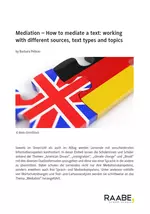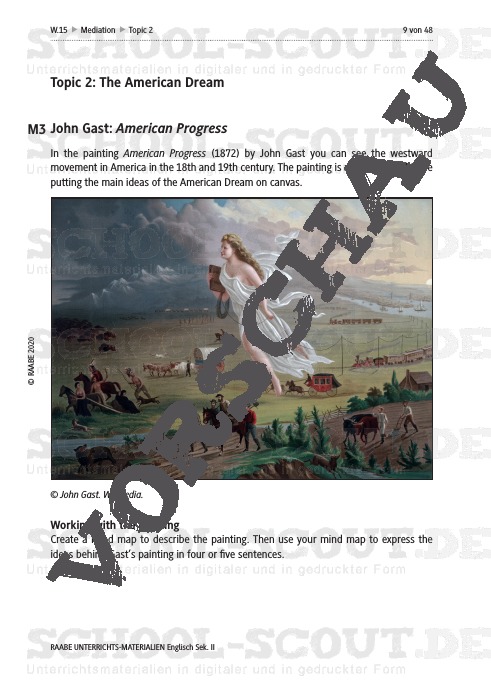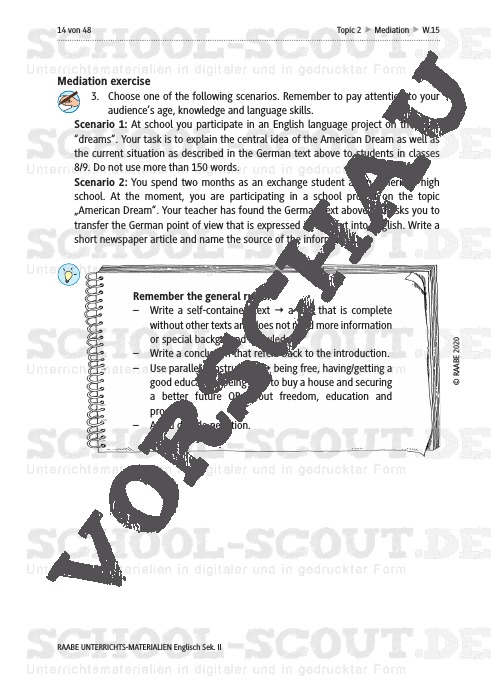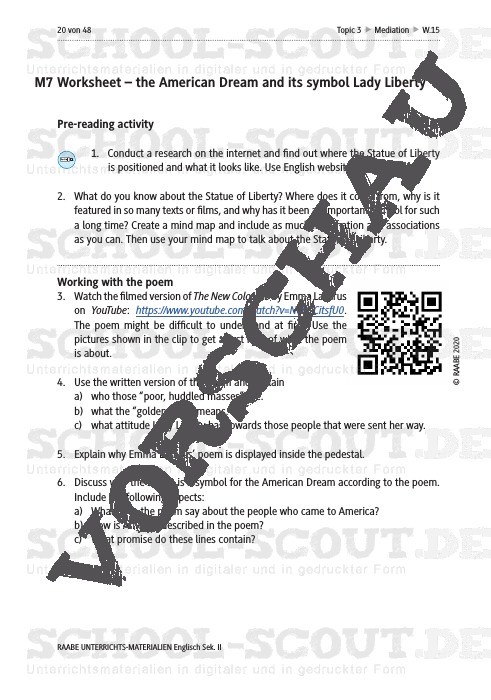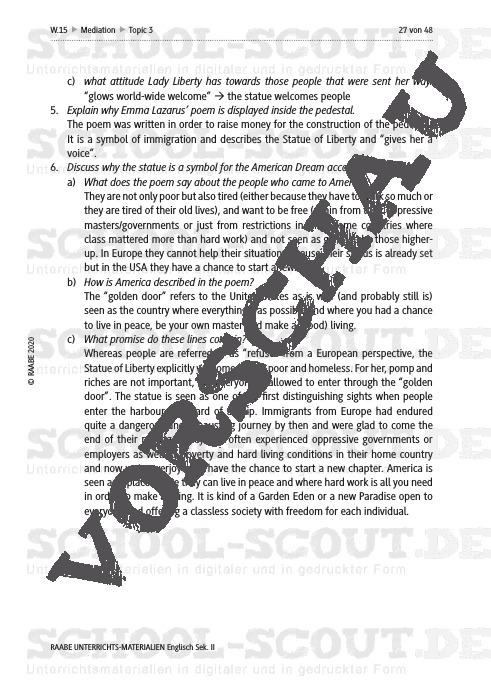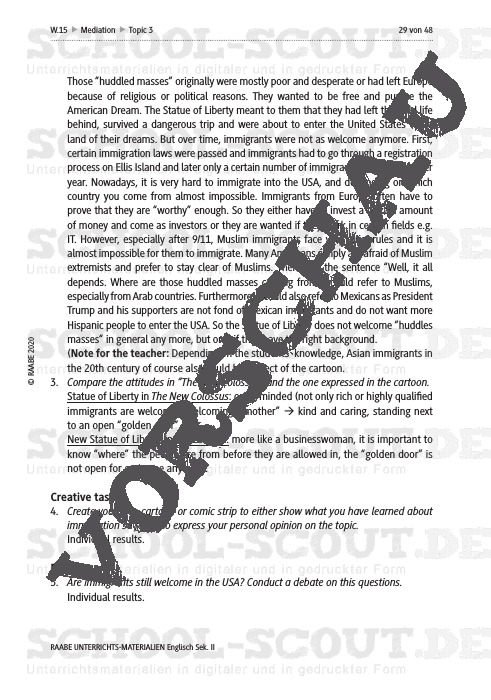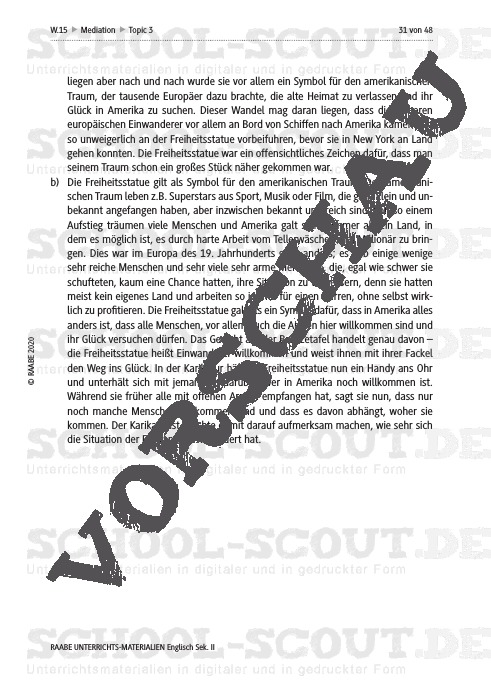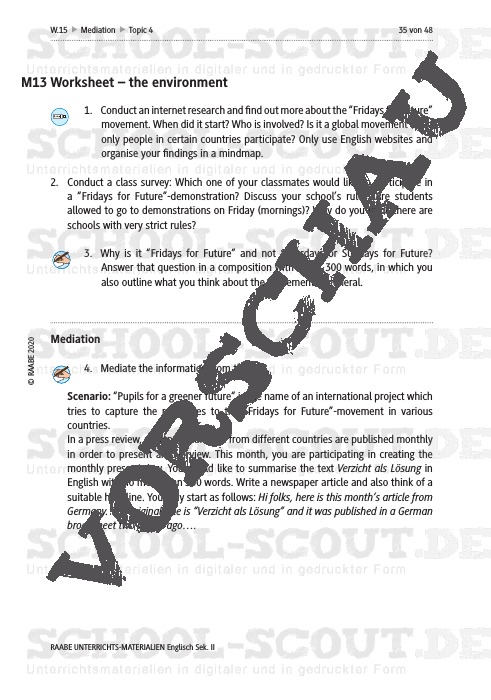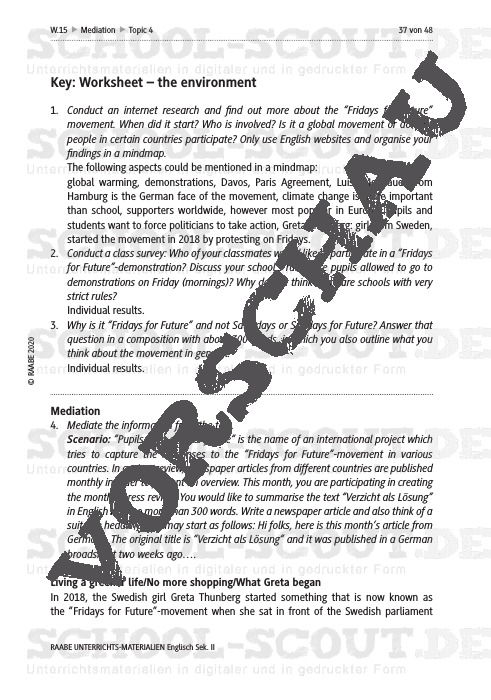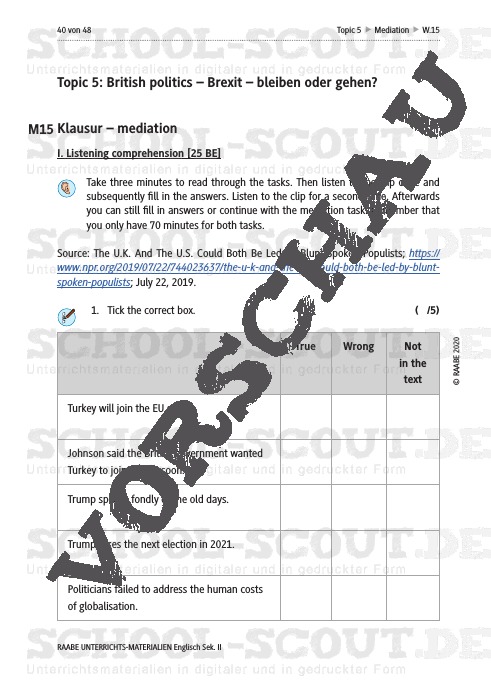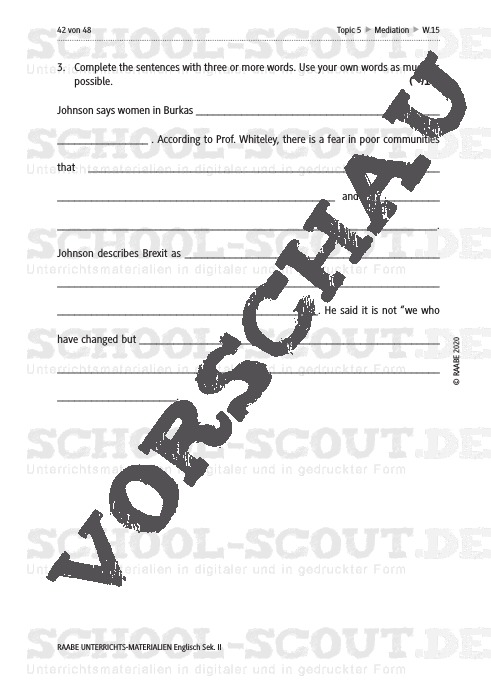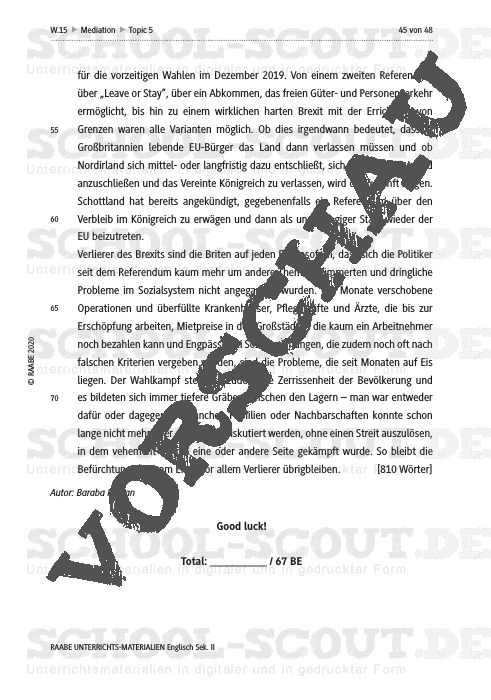Mediation - How to mediate a text
Working with different sources, text types and topics
- Abiturthema in:
- Nordrhein-Westfalen 2025
- Typ:
- Unterrichtseinheit
- Umfang:
- 53 Seiten (2,8 MB)
- Verlag:
- RAABE
- Auflage:
- 1 (2020)
- Fächer:
- Englisch
- Klassen:
- 11-13
- Schulform:
- Gymnasium
Sowohl im Unterricht als auch im Alltag werden Lernende mit verschiedensten Informationsquellen konfrontiert. In dieser Einheit lernen die Schülerinnen und Schüler anhand der Themen „American Dream“, „immigration“, „climate change“ und „Brexit“ mit den diversen Quellenformaten umzugehen und diese von einer Sprache in die andere zu übermitteln. Dabei schulen die Lernenden nicht nur ihre Mediationskompetenz, sondern erweitern auch ihre Sprach- und Medienkompetenz. Unter anderem mithilfe von Wortschatzübungen und Text- und Cartoonanalysen werden sie schrittweise an das Thema „Mediation“ herangeführt.
Inhaltsverzeichnis:
- Facts
- Notes on the material
- Topic 1: How to do a mediation
- Topic 2: The American Dream
- Topic 3: Immigration
- Topic 4: The environment
- Topic 5: British politics – Brexit – bleiben oder gehen?
Competences and skills:
- Students enhance their mediation skills by transferring information from German or English texts into the other language. They learn to simplify complex contents and structures in order to convey the message of a text to different audiences.
- Students also practise their listening and reading competences as well as their writing skills.
No matter whether students participate in school exchange programs or European exchange programs like Erasmus, they always meet people from other cultural backgrounds which creates opportunities for interchange. Due to the internet, students also have endless possibilities to communicate with people around the world and to participate in international projects. Global movements like the “Fridays for Future”-campaign show that it is normal for young people to “get together” online and share ideas with people from other countries. The language used internationally is English and, therefore, it is important that students know how to get their ideas across. For some texts e.g. contracts or other legal documents, a detailed translation is needed in order to grasp every detail but most of the time the focus is on mediating. Thus, students need to know how to simplify and paraphrase and also how to take their partner’s general knowledge and cultural background into account. The addressee needs to understand what a headline, a poster or any other text really is about rather than just hear a translation word by word.
Purely private chats in English are something students might be used to but difficulties arise whenever the focus is not only on accuracy but a certain content has to be “translated” with regards to a certain addressee. That could be a person unfamiliar with certain facts and he or she needs some extra background information or an audience used to a certain way of being addressed e.g. in a speech. Whereas a more formal style is required for a newspaper article, simpler language is a good choice when communicating with kids. Students also need to learn how to communicate complex ideas. Once they are familiar with different text sources and strategies for simpli?cation, if the language in the German original is too complex, they can also follow up mediation tasks with the interpretation of poems or cartoons, write comments or compositions or simply give their opinion.


